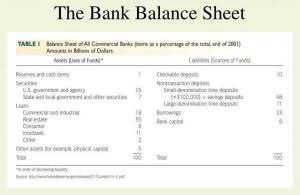
The beginning work in progress inventory is the ending balance from the prior accounting period, i.e. the closing carrying balance is carried forward the work in process inventory account of a manufacturing company as the beginning balance for the next period. Once the product is marked as a finished good and is subsequently sold, the appropriate amount is removed inventory balance on the balance sheet. You could, for example, adopt just-in-time production, identify and address bottlenecks in the process, or upgrade your equipment. Correct tracking ensures accurate inventory valuation, which in turn leads to more reliable financial reporting and better decision-making.

What are inventory Holding Costs? Formula & Tips to Reduce
As the name implies, WIP inventory accounting involves keeping track of the costs of unfinished goods as they move through the production process. WIP is considered a current asset in the company’s balance sheet QuickBooks and represents the total value of all materials, labor, and overhead of the unfinished products. Inventory in this classification typically involves the full amount of raw materials needed for a product, since that is usually included in the product at the beginning of the manufacturing process.
- Doing this with spreadsheets or pen-and-paper is possible for very small or simple operations.
- The chief advantage of these systems lies in unified access to real-time production data.
- Manufacturing overhead, being indirect, requires a different approach for allocation to WIP.
- This report reflects input from a wide range of industries and explores the key economic trends,…
- This method values the remaining ending WIP inventory at the cost of the most recently incurred inputs, reflecting current costs more closely.
shows a balance of $3,000 at the end of an accounting period. The
The percentage used for raw materials, for example, will be higher than for labor because you must incur the costs for materials before you can deploy labor to work on them. The finished goods inventory account is a type of control account that controls the individual finished goods records in the finished goods subsidiary ledger. Understandably, all companies need to be focused on their cash flow and overall financial health. While larger companies can absorb Mental Health Billing a few more errors due to scale and averaging, small and medium-sized companies often have little to no room for error.

Step 2: Understand the formula
The cost of goods manufactured, or COGM, is a crucial KPI for manufacturers that measures the total expenses incurred from manufacturing the finished products completed in this financial period. Calculating the value of WIP inventory involves associating a cost with a percentage of completion. This can be a bit time-consuming, so it’s typically best to tally it up at the end of your accounting period to minimize uncertainty on your company’s balance sheet. Work in process inventory is the stage immediately before it becomes a finished good.
shows direct material cost of $2,800 and direct labor cost of
- With efficient WIP management, you can minimize waste, optimize inventory levels, and lower your overall production expenses.
- Another reason to classify WIP inventory is that it’s a significant factor in the valuation of your business.
- Selecting the right supplier is crucial in maintaining a smooth flow of work-in-progress (WIP) inventory.
- When inventory has undergone full production and is in a stage that’s ready for sale, it becomes a finished good in inventory accounting.
- A competent 3PL offers warehousing solutions, cross-docking capabilities, and just-in-time (JIT) delivery services that reduce bottlenecks between production stages.
Failing to monitor your manufacturing company’s WIP can have negative financial and operational outcomes. Staying on top of WIP can help you maximize production efficiencies, better manage your costs and, ultimately, improve your profitability. WIP inventory should be kept at “just the right size” – big enough to ensure consecutive processes can flow optimally and small enough to avoid it piling up and tying up extra cash. To achieve this, WIP needs to be continuously managed and tracked throughout the manufacturing process. Designing optimized storage and shop floor layouts and considering WIP inventory volumes already in the production planning phase is also a must. One of the central tenets of inventory optimization is maintaining the right stock levels at all times.
What Does G&A Stand For in Accounting?
Real-time visibility into WIP levels allows for timely resource allocation, cost driver identification, and adherence to just-in-time (JIT) principles. Minimizing WIP helps reduce the risk of product damage or loss during processing and enhances quality control across manufacturing stages. Ultimately, controlling WIP inventory supports a leaner, more responsive supply chain and improves overall profitability.
incurred direct materials cost of $63,900 and direct labor cost of
Another reason to classify WIP inventory is that it’s a significant factor in the valuation of your business. If you’re applying for a loan, the lender may be hesitant to count WIP inventory as collateral (even though it’s tallied as an asset) since it’s not very liquid. In this article, we’ll cover the importance of classifying WIP inventory, how to calculate it, and how you can use the insights to optimize your inventory management.

data for the month of April. The balance in the Work-in-Process
By following these steps, you can systematically calculate your WIP inventory and have a clearer understanding of your production process and current assets. The first step is to ascertain the Beginning Work in Process Inventory, which represents the value of partially completed goods carried over from the prior accounting period. This figure is readily available from the previous period’s financial statements.
Keep in mind that WIP interpretations can vary depending on the company and sector. Consulting with an accountant is advised to ensure accuracy when assessing implications. WIP accounting can be incredibly complex for large projects that are in process over many months. In those situations, we use job costing to assign individual costs to projects. The choice between FIFO and Weighted-Average impacts the calculated per-unit cost of production, which in turn affects the valuation of both Cost of Goods Manufactured (COGM) and ending WIP inventory.
Work in Process (WIP) includes inventory that has moved beyond the raw materials stage but has not yet become a completed product. This inventory represents items currently undergoing transformation on the production line. WIP is considered a current asset on a company’s balance sheet, reflecting the value of partially completed goods at a specific point in time.




